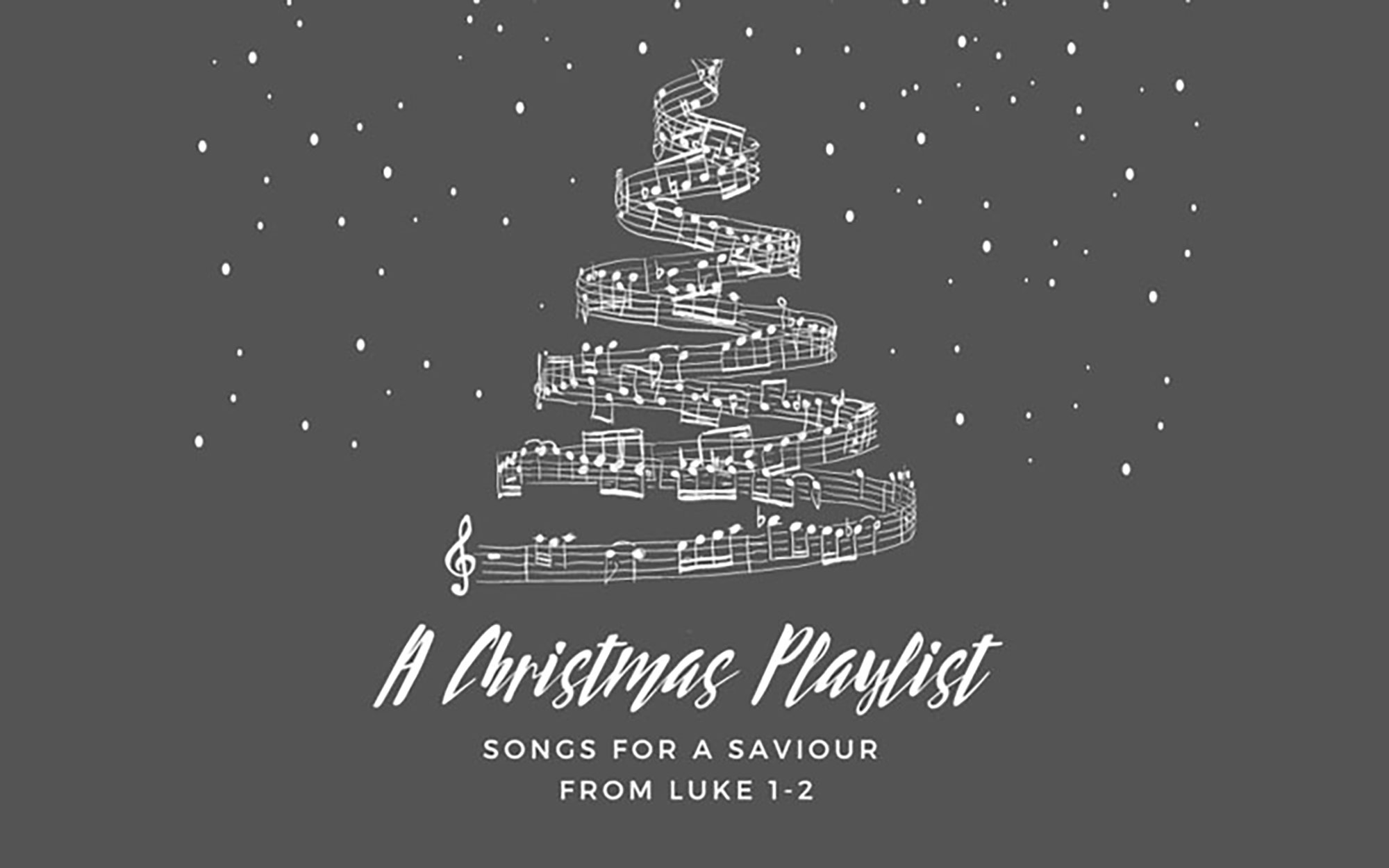This Christmas we will be listening to the first ‘Christmas Playlist’.
That is, the songs from Luke 1-2 that surround the birth of Jesus. Looking ahead, we are going to continue in the gospel of Luke in January 2023 as we consider Luke chapter 9. Then in the spring we will return to Luke 23 & 24 for the Easter services. So, we are going to be spending a fair bit of time in Luke over the next few months. Here are three brief things to consider that will hopefully help us to understand the opening of Luke’s gospel (chapters 1&2) and crucially how we are to respond.
1. A Purposeful & Orderly Account
Firstly, we need to note that Luke is writing his gospel with a specific purpose. He wants those who read his work to have ‘certain belief’ (1.4) in what has been fulfilled (1.1) in the birth, life, death, resurrection and ascension of Jesus. The whole gospel of Luke needs to be read with this ultimate goal of producing certain and saving belief. Secondly, Luke indicates that he has deliberately written an ‘orderly account’ (1.3) of the narrative of Jesus. This means that we need to take note of the careful way that Luke arranges his material. It is often the case that the structure and arrangement of the content drives home Luke’s message.
This point can be demonstrated by considering the beginning and end of the book. There is a deliberate contrast between the start and the conclusion that captures the whole of Luke’s message. His account begins with Zechariah in the temple. Here, the word of the Lord is met with unbelief (1.20) and results in silence (1.22). However, the gospel concludes, once again, in the temple with the disciples. But, rather than silent unbelief there we read they are marked by joyful, praising, certain belief! (Luke 24.53). And in that contrast rests the whole of Luke’s message.
So, the question comes to us: how are we going to respond? The different ways to respond is intended to drive the message home. Luke is urging his audience not to be an unbeliever! Don’t resist the coming of the saviour. Rather, respond in joyful belief and have certainty about the coming of Jesus. Once we notice that contrast in the way which people respond to Jesus we will notice it time and again in Luke’s gospel. How are we going to respond?
2. A Historical & Emotional Context
Secondly, Luke grounds his account within historical reality. He claims to have ‘followed all things closely for some time past’ (1.3). In other words, this is not a fairy tale he does not begin with a vague ‘once upon a time’. Rather, he opens with ‘In the days of Herod, king of Judea’ (1.5). This is an important historical marker that grounds the following events within verifiable history. However, we need to realise there is more to this comment than a mere historical record. This beginning also captures a hugely important emotional context to the way in which Luke begins his gospel. There is a sense of unfulfilled anticipation and a deep longing for God to deliver his people. Herod was not the king that God had promised, nor was the nation to be under the rule of Rome. Things were meant to be very different – God had promised that they would be!
And so, with the coming of Jesus there is a wonderful sense of fulfilment of God’s promises. This can be observed in the description of Simeon and Anna (Luke 2) as they greet the arrival of Jesus. They were ‘waiting for the consolation of Israel’ (2.25), they were ‘waiting for the redemption of Jerusalem’ (2.38). Hence, Simeon could say he was ready for a peaceful departure, because: ‘my eyes have seen your salvation’ (2.30). So, two things about the context: ‘In the days of Herod, king of Judea’. It is definitely a historical marker. But more than that, the historical context is bound up with an emotional sense of longing and anticipation for God to save his people. We see this theme feature prominently in the Christmas Playlist in Luke 1-2.
3. Songs of Sunrise & Shadow
Third, Christmas has always been a time for songs and singing. It’s probably fair to say that some songs are better than others. We all have our favourites! Some songs come and go, some stick around and get played (earlier & earlier it seems) each year! But, Luke records for us the first Christmas Playlist. There are really five songs: 1) The Song of Elizabeth (1.42-45) 2) The Song of Mary (1.46-55) 3) The Song of Zechariah (1.67-80) 4) The Song of the Angels (2.14) 5) The Song of Simeon (& Anna) – (2.29-32). There are a couple of things that are worth noting about these songs by way of introduction.
- The arrival of Jesus is something worth singing about! Here is ‘good news of great joy for all people’ (2.10). These songs demonstrate how to respond to the coming of Jesus. We are to join with the cast of the first Christmas in joyful praise, joyful belief and thanksgiving for the promised saviour.
- They capture the big message of the bible. In the Old Testament, God makes promises to save his people. And in the New Testament, God keeps those promises. So, Promises Made; Promises Kept. We see this is the song of Mary: God has ‘remembered his mercy. . which he spoke to our father Abraham (1.55). And again in Zechariah, God has ‘visited and redeemed his people. . . as he spoke by the mouth of his holy prophets’ (1.68-70). Once more in the words of Simeon waiting for the consolation of Israel: ‘my eyes have seen (your promised) salvation’ (2.30). God has been faithful to his promises – and it’s worth signing about!
- They are songs of sunrise and shadow. The songs are rightly full of moving, joyful celebration. Notice the way in which Zechariah sings that the ‘sunrise’ (1.78) of God’s mercy shall visit us bringing light to our darkness. This is gloriously true. However, from the outset, Luke also carefully points us to the shadow of the cross. In the same way he shows us the sunrise of the saviour’s dawn; Luke will also point us to the shadow of the saviour’s death. This is evident in the words of Simeon to Mary, that the life of the child will be ‘opposed’ and a ‘sword will pierce through your soul also’ (2.34-35). Moreover, Luke quickly takes his audience to the temple at the close of Luke 2. And here we see, from childhood, the life of Jesus is to be about his father’s business, he ‘must be in his father’s house’ (2.49). And we are told that Mary treasured up all these things in her heart (2.51). As we sing the song of the saviour’s sunrise, we are also pointed towards the saviour’s suffering. To be faithful to the message of Christmas, the two must be held together.
Let’s pray, then, that the study of these first Christmas songs will be a blessing to us this year as we share in the joyful celebration at the dawning of the saviour. Let’s make sure that we respond in the way Luke intends, not with resistance or doubt but in humble, joyful, certain belief! And as we consider the dawn of the saviour, we are also directed by Luke to his death and the salvation that this bring to his people. Let’s pray, this Christmas, that as a church we would be clear and faithful in the proclamation of this ‘Christmas Playlist’ and that it would truly be ‘good news of great joy, for all people’.



